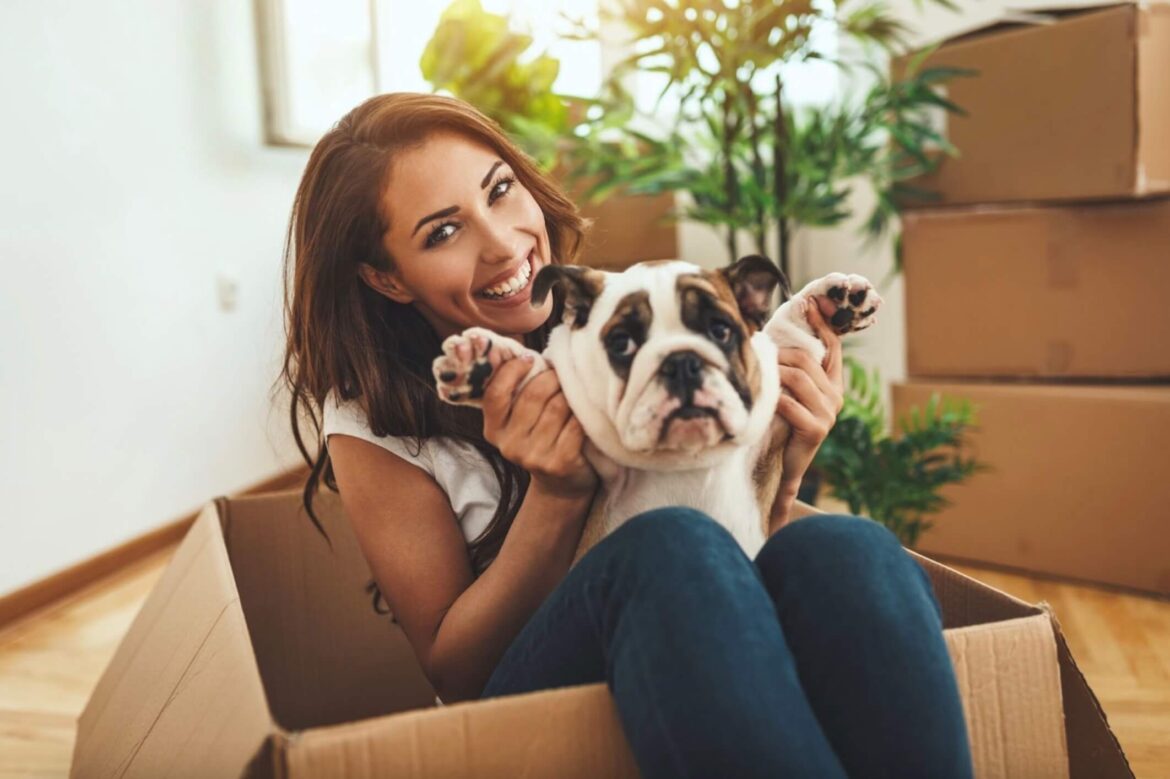Table of Contents
Moving isn’t fun for anyone, pets included. With everything needing to be packed, organized, cleaned, and transported, pets often get neglected during the moving process. However, an ill-prepared pet can add extra stress on top of your move. If you’re planning on moving and having pets in your household, being prepared can make all the difference in how well your furry friends acclimate to your new home. If you want to keep Fido safe while moving, here are our ten best tips.
1. Ensure your new space is pet friendly
No matter what kind of pet you have, ensuring your new home is safe and welcoming will make the transition easier for everyone. Of course, you need to verify your new spot’s pet policy allows for furry friends, but you also need to confirm your new home is perfect for you and your pets. For example, indoor cats need window space for entertainment during the day. On the other hand, dogs need larger areas with a yard to use the bathroom, or a pet-friendly neighborhood to go on walks. Considering what your pet needs from your new space ensures they’re provided with everything they need from their home.
2. Make a plan
Before your move-in date, having a plan makes all of the difference in your pet’s happiness and safety. Whether you have dogs, cats, rodents, or reptiles, a moving plan ensures they remain healthy and happy despite all the craziness going on. When preparing to move, aim to keep one room of your house somewhat normal and out of the way so your pets have a safe space to stay in that emulates some kind of normalcy. Aim to make that area the last part of your home to move, and once you’re ready to get them going, secure your animals in a crate or carrier.
3. Acclimate your pets to their crates
Curious pets may get in the way with all the boxes moving and packing, so having a safe place to secure your pets and move them out of the way is necessary. However, some pets may not take kindly to being confined to a crate, making it harder for everyone involved. At least a month before you plan to move, begin acclimating your pet to the space to reduce anxiety. Instead of making the crate or carrier feel like jail for your pet, try to entice them into going into the area with treats, blankets, and toys. If your pet feels like the space is a happy place, they’ll be less likely to feel anxious when you have to put them in there.
4. Keep your pets away from the action
Heavy furniture, lots of boxes, and foot traffic can lead to accidents, humans and pets included. Keeping your pets away from the action is your best bet to preventing a trip to the vet later. We mentioned earlier it’s important to keep an area of your home as normal as possible until the last moment as well as acclimate your pet to the crate or carrier. These steps are crucial for the safety of your household and pet
5. Pet-proof your new spot
If you have a dog or cat who likes to make a break for it as soon as the door opens, pet-proofing your new home is necessary. Before moving all of your furniture to your new home, do a run-through of the space and identify some areas that may need some pet-proofing. Consider adding screen doors to prevent animals from breaking out, adding fencing, cabinet locks to prevent curious cats from getting into areas they shouldn’t, and whatever else you may need to keep your pets safe.
If you’ve got felines in your household, moving with cats is especially difficult because they don’t typically appreciate change. Try to make your new home as welcoming as possible by giving them lots of places to climb and hide.
6. Offer lots of treats
Just like humans, pets sometimes find change difficult. One way to ensure your furry friends see your new space as positive is by offering lots of treats. Before, during, and after you move, offer lots of high-value treats to your pets so they associate their new home as positive to help them acclimate to their new home.

7. Consult your veterinarian
Consulting a veterinarian before moving can give you peace of mind and helpful tips for the transition. If you’re moving hundreds of miles away, particularly anxious pets may need the help of medicine to relax them and keep them safe, which a vet can prescribe.
8. Invest in proper seating for the car
If you’re moving by car or truck, you’ll need proper seating installed to keep your pet safe and out of the way while driving. Luckily, there are plenty of car seating options on the market for pets. If you plan on putting your pet in a crate, you can invest in seat belting to keep the crate secure while you drive. You can also find car carriers and harnesses that attach to seat belts to keep them from bouncing around. Or if you prefer giving your pet a little more room, you can find booster seats and hammock-style back seat covers to keep your pet secure with a bit more room.
9. Pack an overnight kit
Like humans, pets also need some essential items that may be easy to get lost in the moving process. Consider packing a bag of essential goods for your pet so you have everything you need easily accessible. Pack extra food, their favorite toys, treats, medications if they need them, and a travel water bowl so you have everything they need on hand.
10. Be patient
If you humans find moving stressful, you can only imagine how your pets feel. Pets can’t understand what’s happening, so remember to be patient with them. Change is hard for everyone, including pets, so try not to get aggravated if they misbehave or get in the way. Remaining calm and patient will help your furry friends acclimate easier and calm their nerves during the moving process.
Final Words
With some preparation and care, your pets will your new home as much as you do. Following these tips will help keep your pet safe during your move while reducing anxiety for everyone involved. So when planning to move, ensure you make a plan for moving with your pets too.
